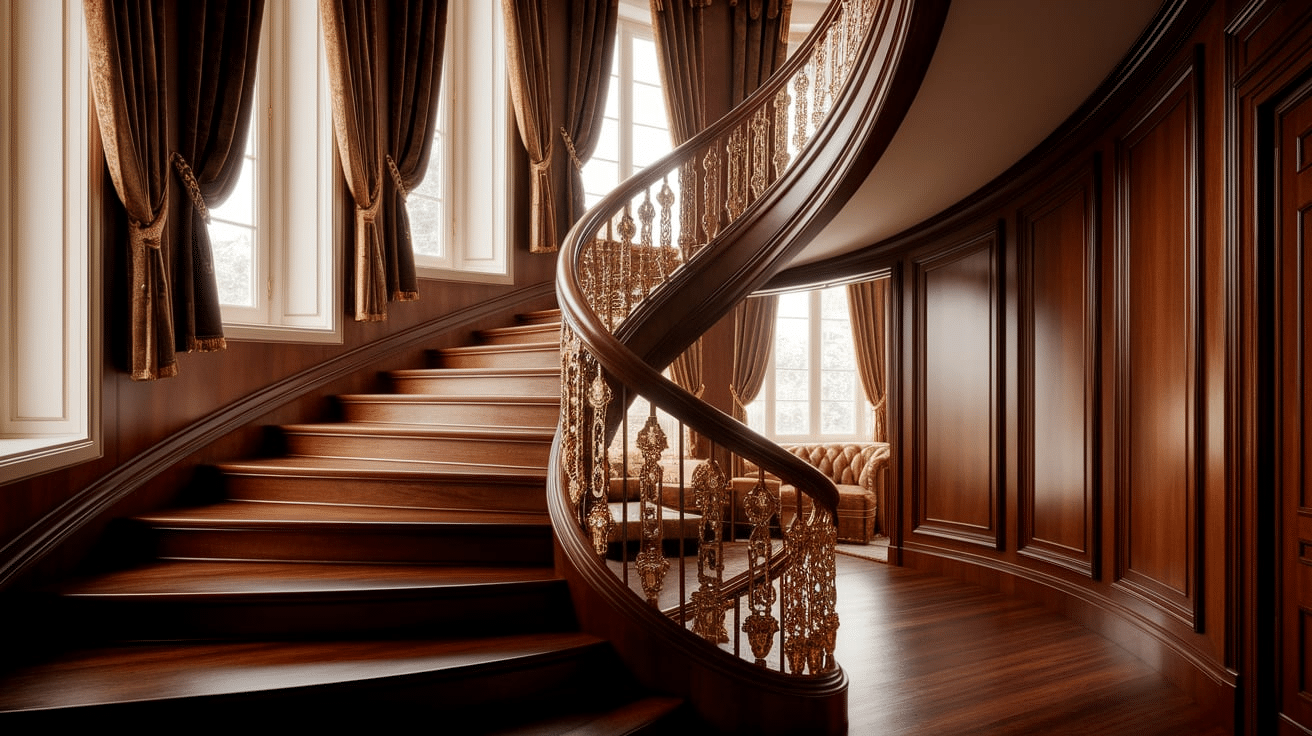Not just steps, your staircase is a style statement.
In most homes, staircases are often overlooked as purely functional. But the right design can dramatically enhance your interior, turning a simple transition between floors into a striking focal point.
From the clean lines of floating stairs to the elegance of a curved design, choosing the perfect staircase is all about balancing form, function, and personality.
In this blog, we’ll discuss popular staircase styles, the best materials to consider, smart layout decisions, and how to match your stairs with your home’s overall vibe.
Why Staircase Style Matters in Home Design
Staircases often go unnoticed in home planning despite being key structural elements that connect different floors.
The right staircase can serve as a focal point or blend with your existing design to improve the overall feel of your space.
Your choice affects spatial perception, bulky designs can make rooms feel cramped while open designs create more visual space. The position influences light flow throughout your home.
Most importantly, your staircase must match your home’s existing style, as mismatched designs clash with the overall look and feel of your living space.
What are the Main Types of Staircase Styles?
The staircase style you select affects both how your home works and looks. Each design has specific good points and limits, making certain styles more fitting for different spaces and tastes.
Let’s look at the most common staircase styles and their unique features.
1. Straight Staircase
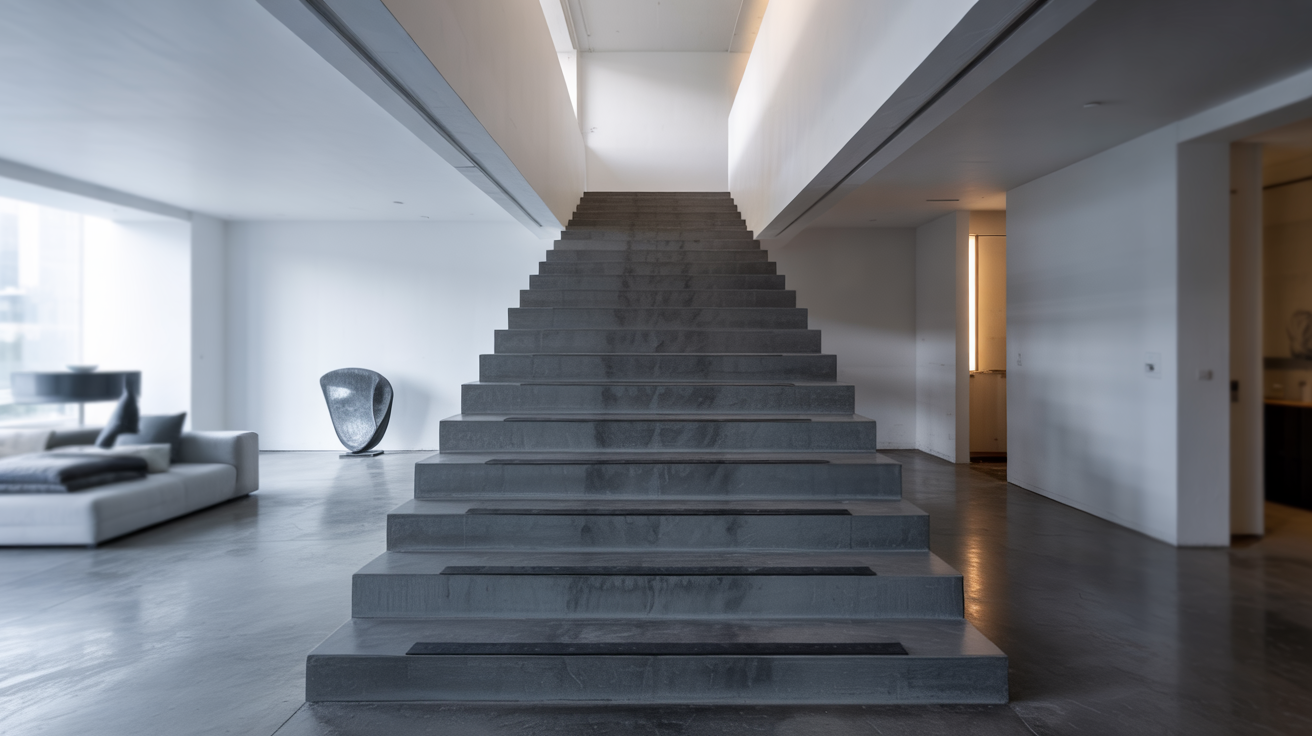
A straight staircase follows a direct, linear path from one floor to the next without any turns or platforms. These staircases feature a simple design with treads and risers arranged in a straight line.
Best suited for: Traditional homes, modern homes with open floor plans, and spaces where simplicity is valued.
Pros: Easier and less costly to build; straightforward to install handrails and railings; simple to climb; works well with most home styles.
Cons: Requires more horizontal space; lacks visual interest compared to other designs; offers no privacy between floors.
2. L-Shaped Staircase
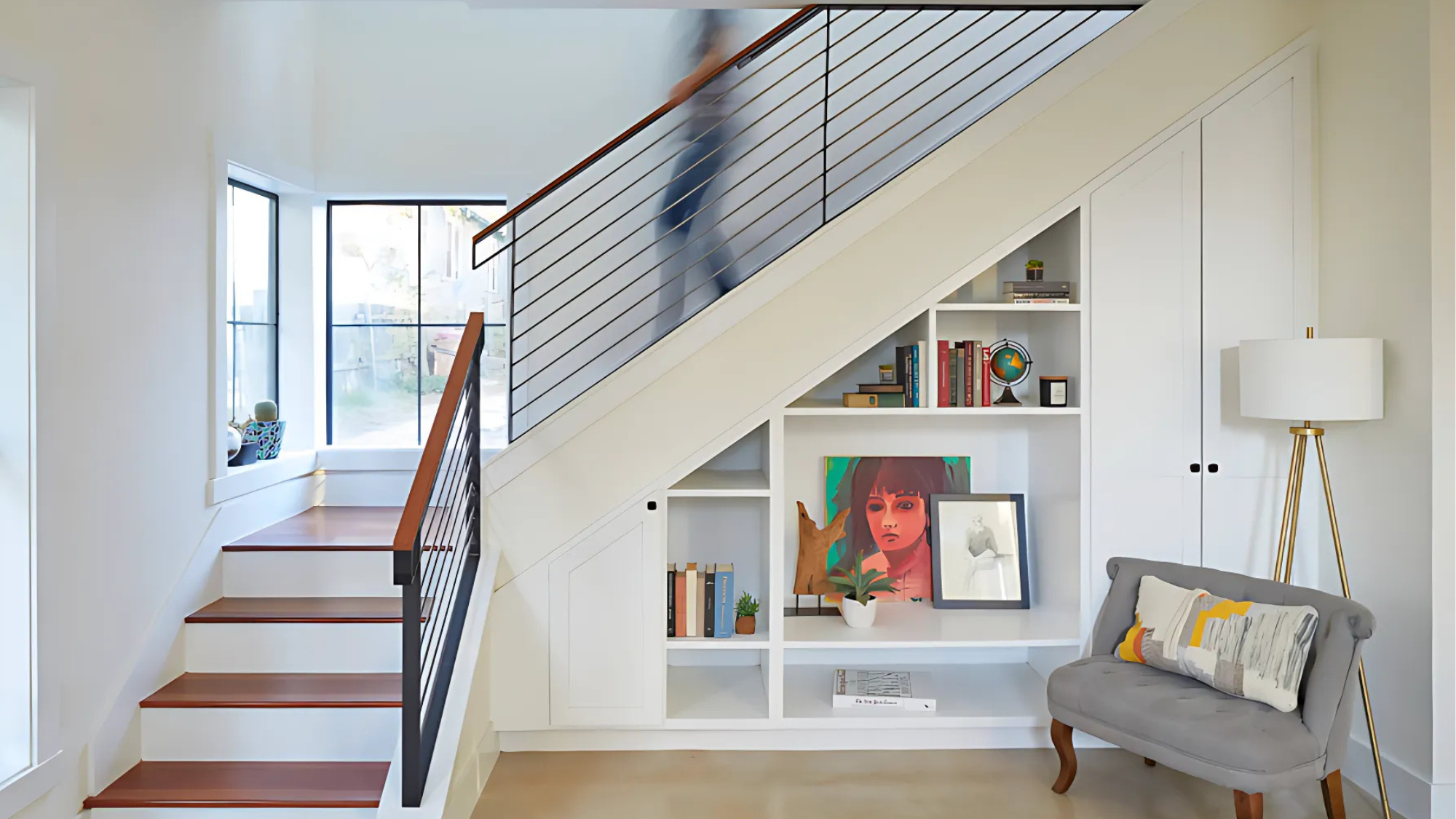
The L-shaped staircase includes a 90-degree turn with a landing at the pivot point. This creates two straight flights of stairs meeting at a right angle.
Best suited for: Homes where space conservation is important, corner locations, and designs requiring visual separation between floors.
Pros: Provides a natural break during ascent; fits well into corner spaces; offers more privacy between floors; adds visual interest with its change in direction.
Cons: More complex to construct than straight staircases; requires additional structural support at the landing; may limit furniture placement options.
3. U-Shaped Staircase
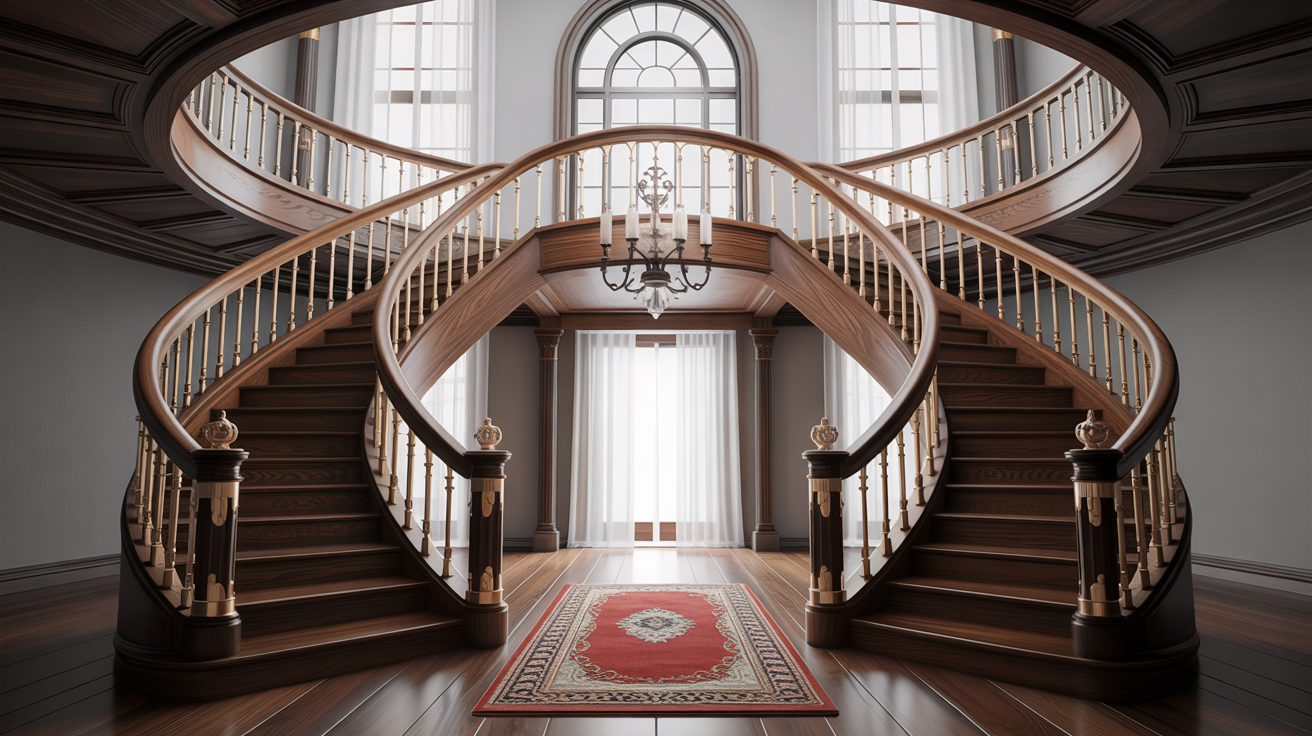
A U-shaped staircase consists of two parallel flights going in opposite directions with a landing connecting them, creating a 180-degree turn.
Best suited for: Homes with limited horizontal space, modern designs, and multi-story buildings.
Pros: Compact footprint that conserves floor space; provides excellent privacy between levels; creates a substantial visual element; landing offers a rest point.
Cons: Can be costlier to build; may feel confined in narrow spaces; requires careful planning for railings and support.
4. Spiral Staircase
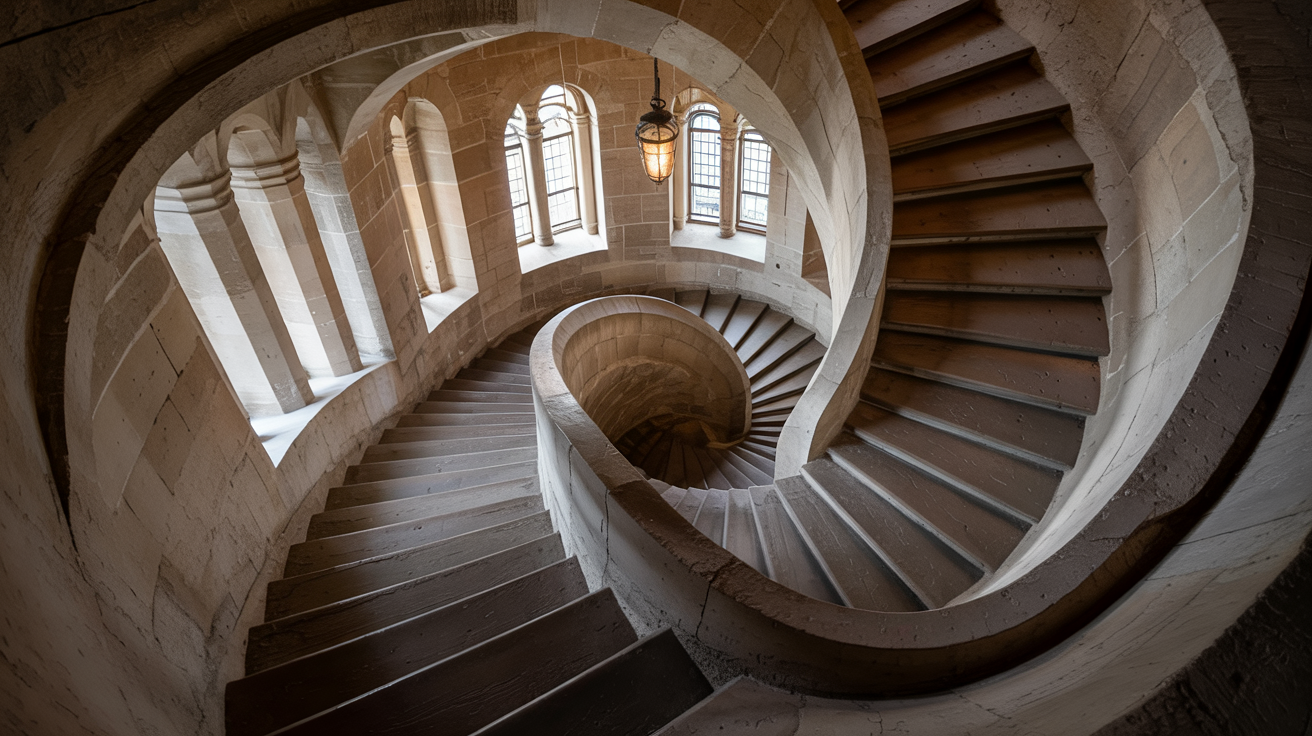
A spiral staircase winds around a central column in a helical pattern, with steps radiating outward from the center pole.
Best suited for: Small spaces, secondary access points, lofts, and homes with a modern or industrial aesthetic.
Pros: Occupies minimal floor space; creates a striking visual focal point; works well in tight spaces where other designs wouldn’t fit.
Cons: More difficult to climb, especially for elderly users or when carrying items; limited width makes moving furniture challenging; may not comply with primary staircase building codes in some areas.
5. Curved Staircase
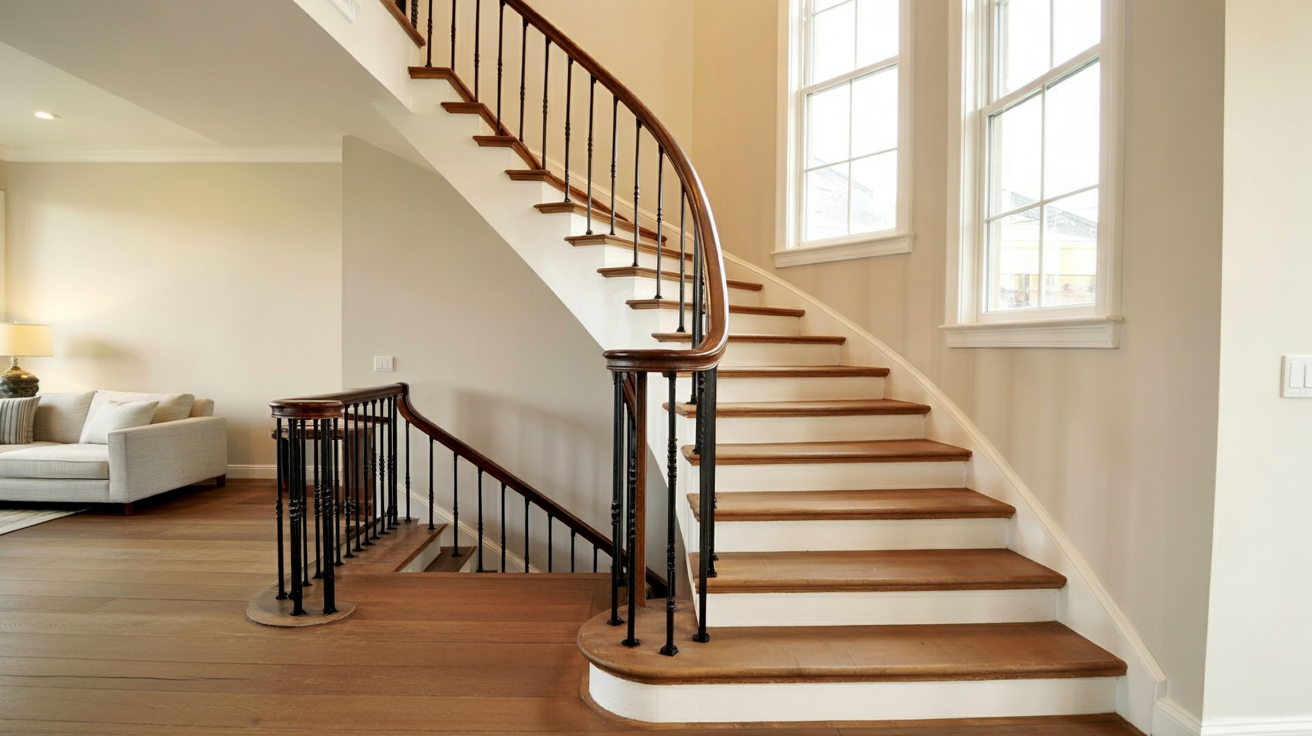
Curved staircases follow a smooth arc without sharp corners or landings, creating a gentle, flowing path between floors.
Best suited for: Grand entrances, luxury homes, and spaces where the staircase serves as a central design feature.
Pros: Creates an elegant, high-end appearance; offers a smooth transition between levels; makes a striking first impression in entry halls.
Cons: Among the most expensive styles to build due to custom requirements; demands significant space; requires specialized construction skills.
6. Winder Staircase
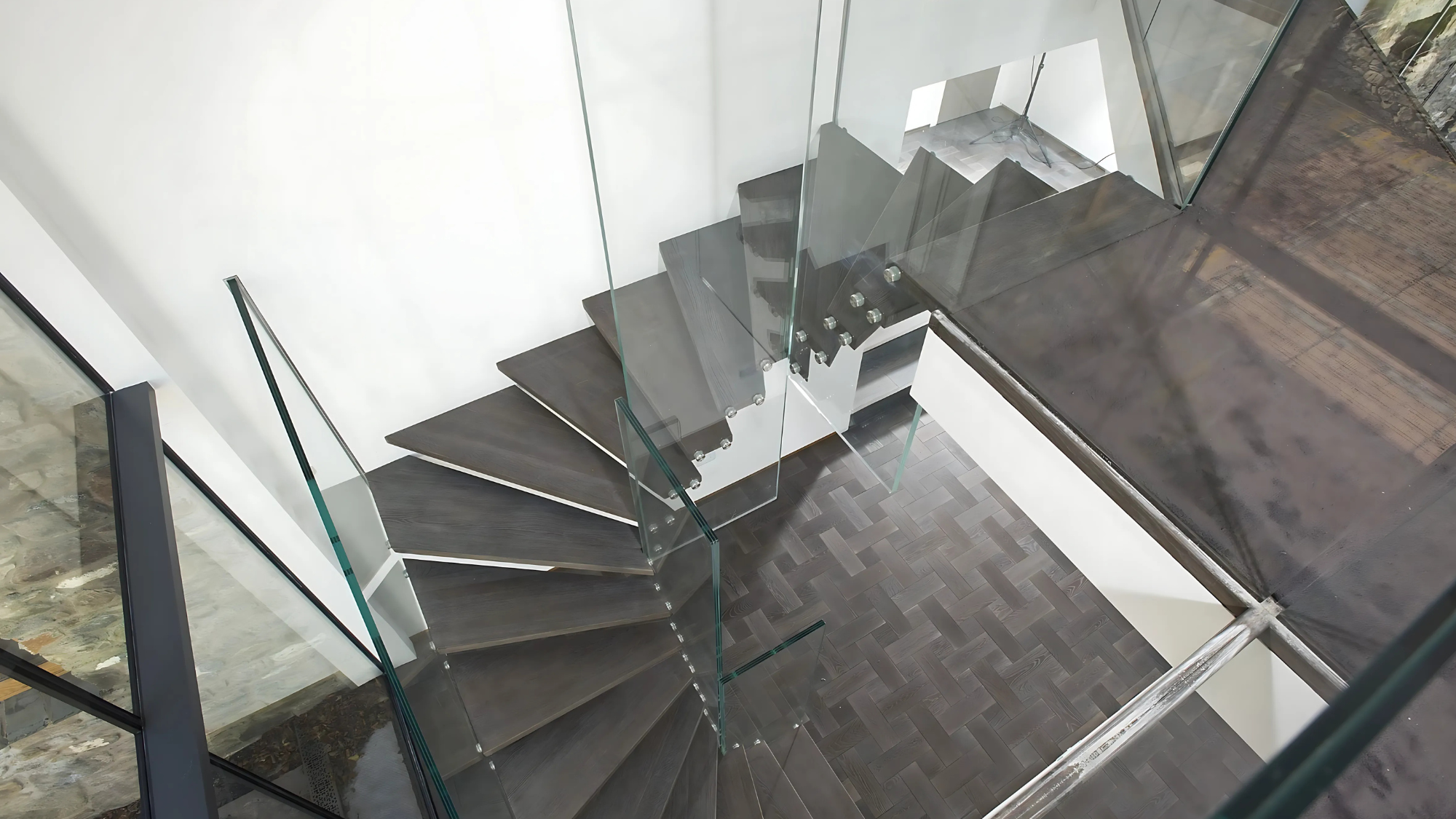
A winder staircase incorporates triangular or pie-shaped steps that change direction without a landing. Unlike L-shaped staircases with flat landings, winders use angled treads to create the turn.
Best suited for: Homes with limited space, corner locations, and older buildings where modern alternatives might not fit.
Pros: Conserves space compared to landing staircases; creates a continuous flow of steps; can add character to period properties.
Cons: Can be more hazardous due to inconsistent tread width at the turn; more difficult to navigate while carrying items; challenging for users with mobility issues.
7. Bifurcated Staircase
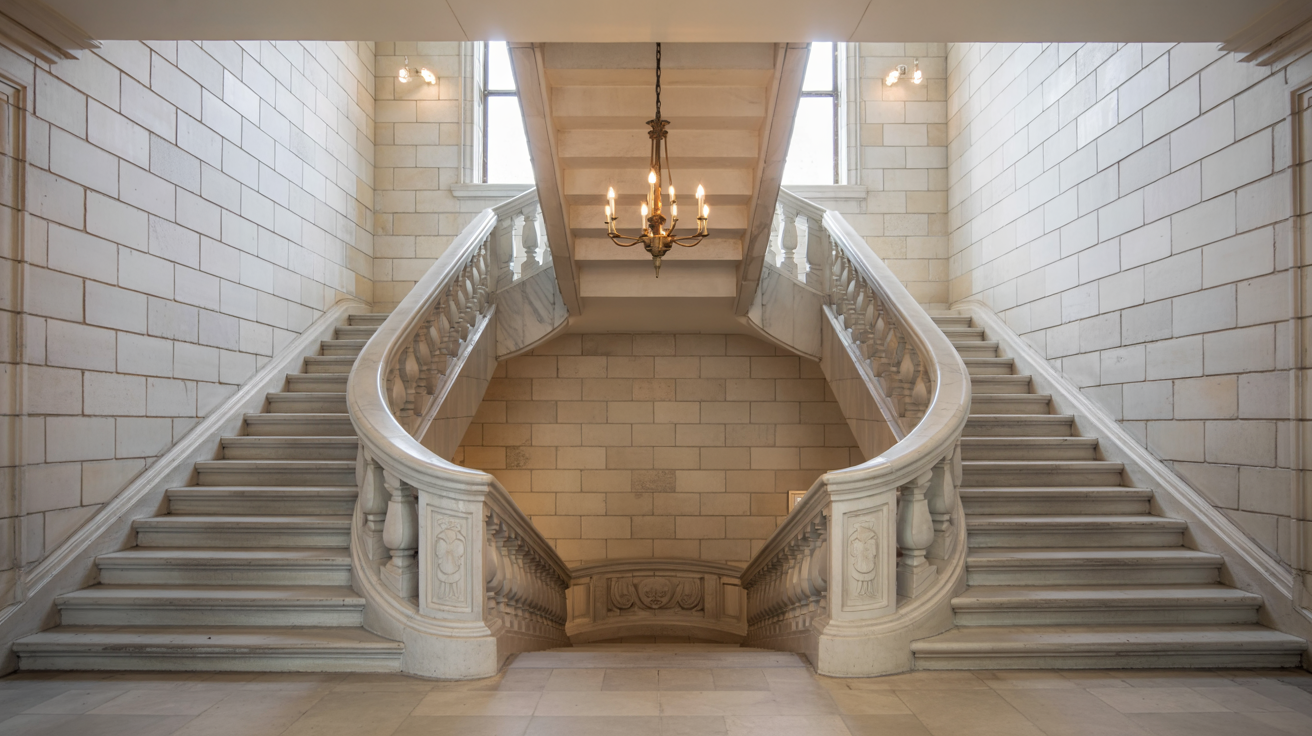
A bifurcated staircase begins with a single flight that splits into two separate flights going in opposite directions from a central landing.
Best suited for: Grand entrances in larger homes, luxury properties, and formal spaces where visual impact matters.
Pros: Creates a dramatic, impressive entrance; allows for symmetrical design; provides two access points to upper levels.
Cons: Requires substantial space; among the most expensive styles to construct; primarily decorative rather than space-efficient.
8. Floating Staircase
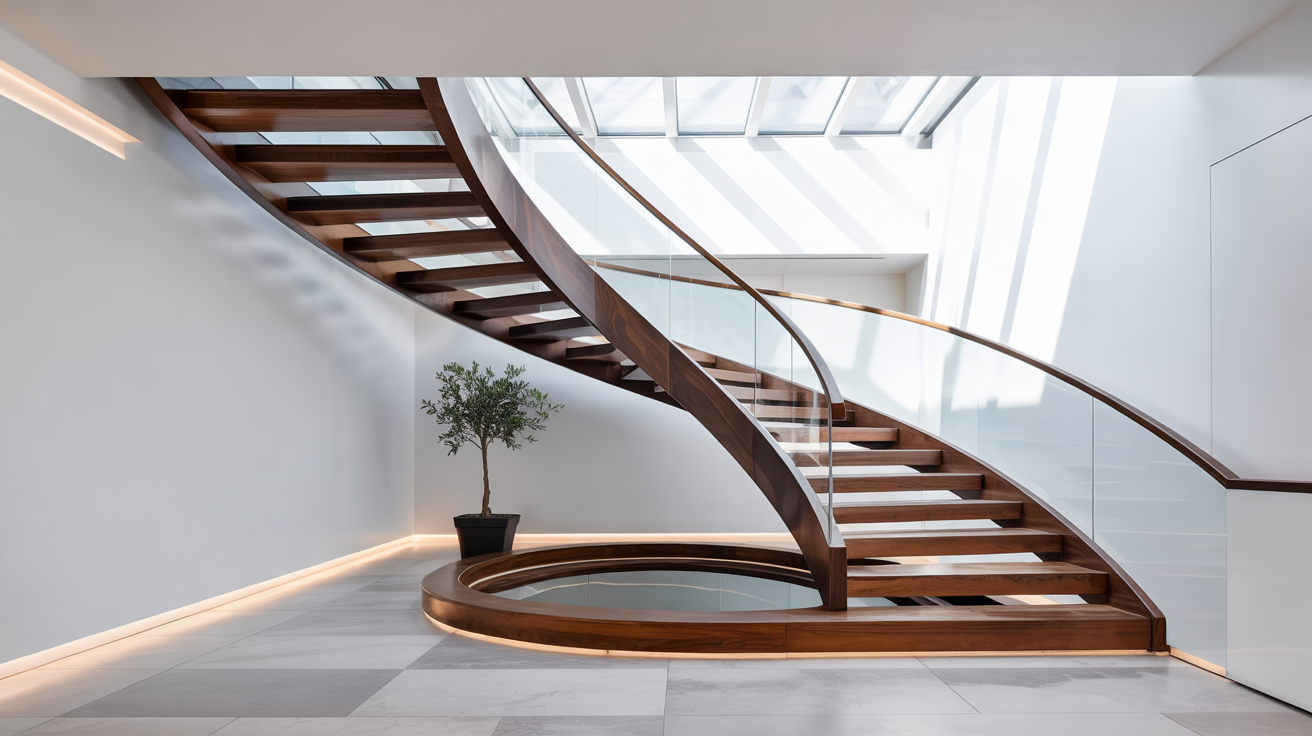
A floating staircase features treads that appear to be suspended in air with minimal or hidden structural supports, creating an illusion of weightlessness.
Best suited for: Contemporary and minimalist homes, open concept spaces, and interiors where visual lightness is important.
Pros: Creates a light, airy appearance; allows light to flow through the space; serves as a striking modern design element.
Cons: Often more expensive due to complex engineering requirements; may not feel secure to some users; usually requires specialized installation.
9. Cantilevered Staircase
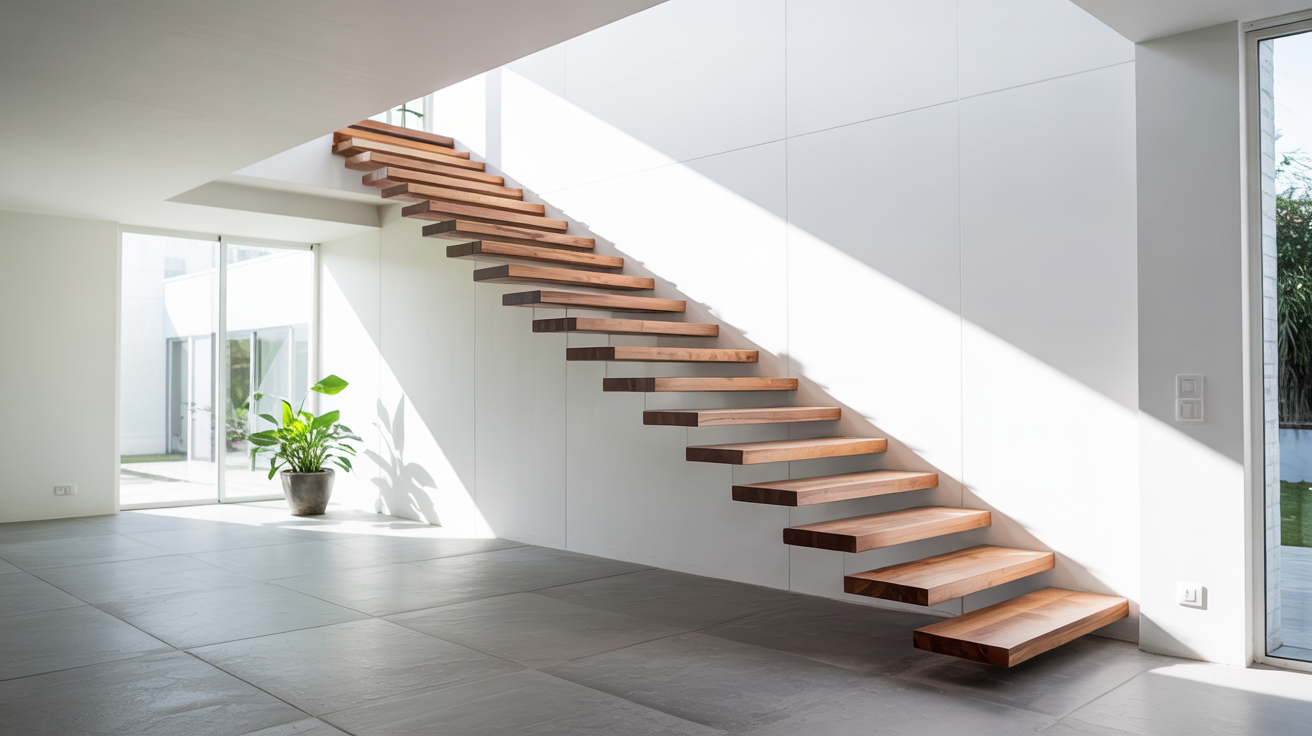
Cantilevered staircases have steps that extend from a single support wall without visible supports on the outer edge, creating a dramatic floating effect.
Best suited for: Modern architectural designs, minimalist interiors, and spaces where structural elements become design features.
Pros: Creates clean lines and open space beneath; makes a strong contemporary statement; maximizes visual openness.
Cons: Requires complex structural engineering; typically more expensive than conventional designs; demands strong supporting walls.
10. Zig-Zag Staircase
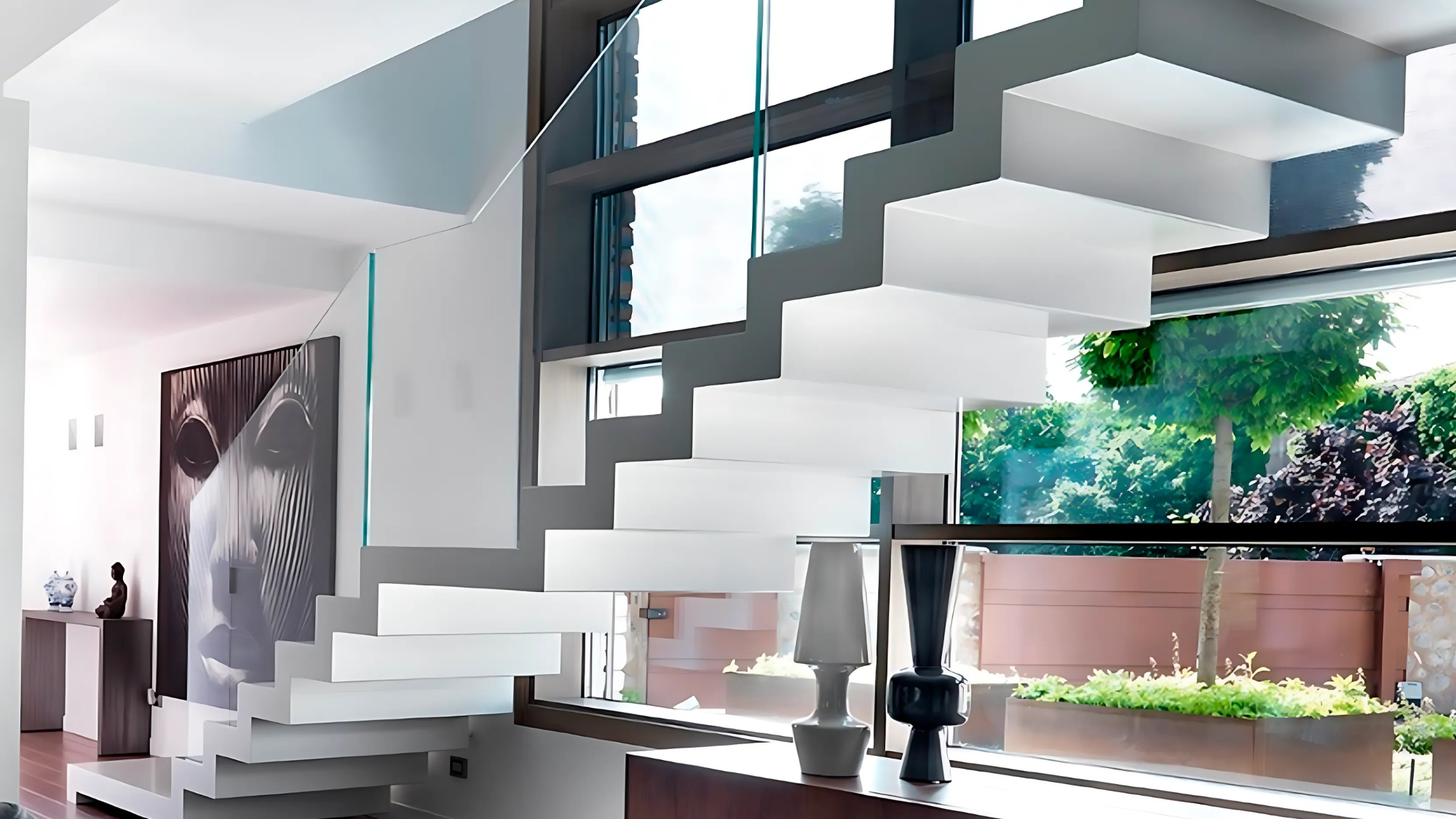
A zig-zag staircase follows a series of straight flights connected at alternating 90-degree turns, creating a dynamic pattern as it rises.
Best suited for: Contemporary homes, spaces with artistic design emphasis, and interiors where the staircase is meant to stand out.
Pros: Creates visual interest and movement; can be designed to maximize space efficiency; makes a bold architectural statement.
Cons: Complex to design and build; may be challenging to navigate quickly; requires careful planning for handrails and safety features.
11. Split-Level Staircase
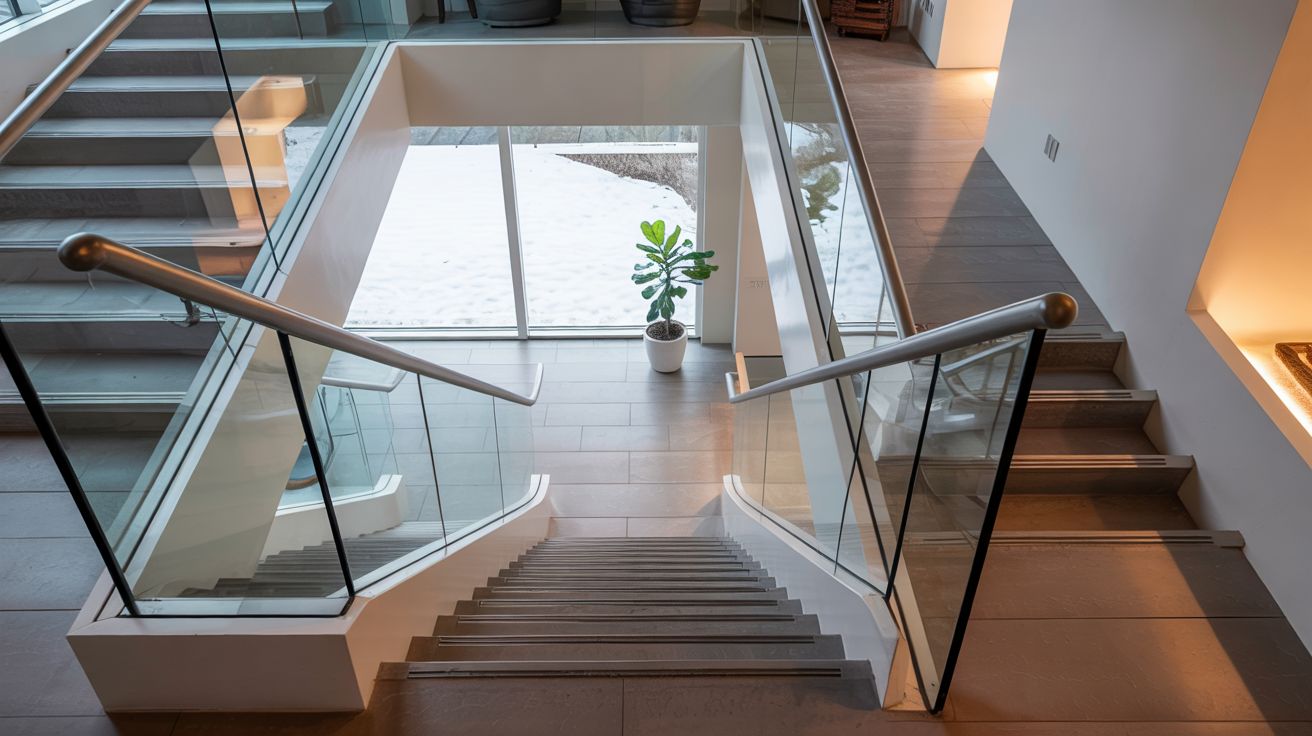
A split-level staircase connects floors that are offset by half a level, typically with short flights of stairs between each level rather than a single long staircase.
Best suited for: Split-level and multi-level homes, hillside buildings, and spaces where gradual transitions between floors are desired.
Pros: Creates natural breaks between living areas; can make climbing easier with shorter flights; allows for interesting spatial relationships between rooms.
Cons: May feel choppy in some floor plans; can make furniture arrangement more challenging; requires careful planning to maintain flow between spaces.
12. Storage Staircase
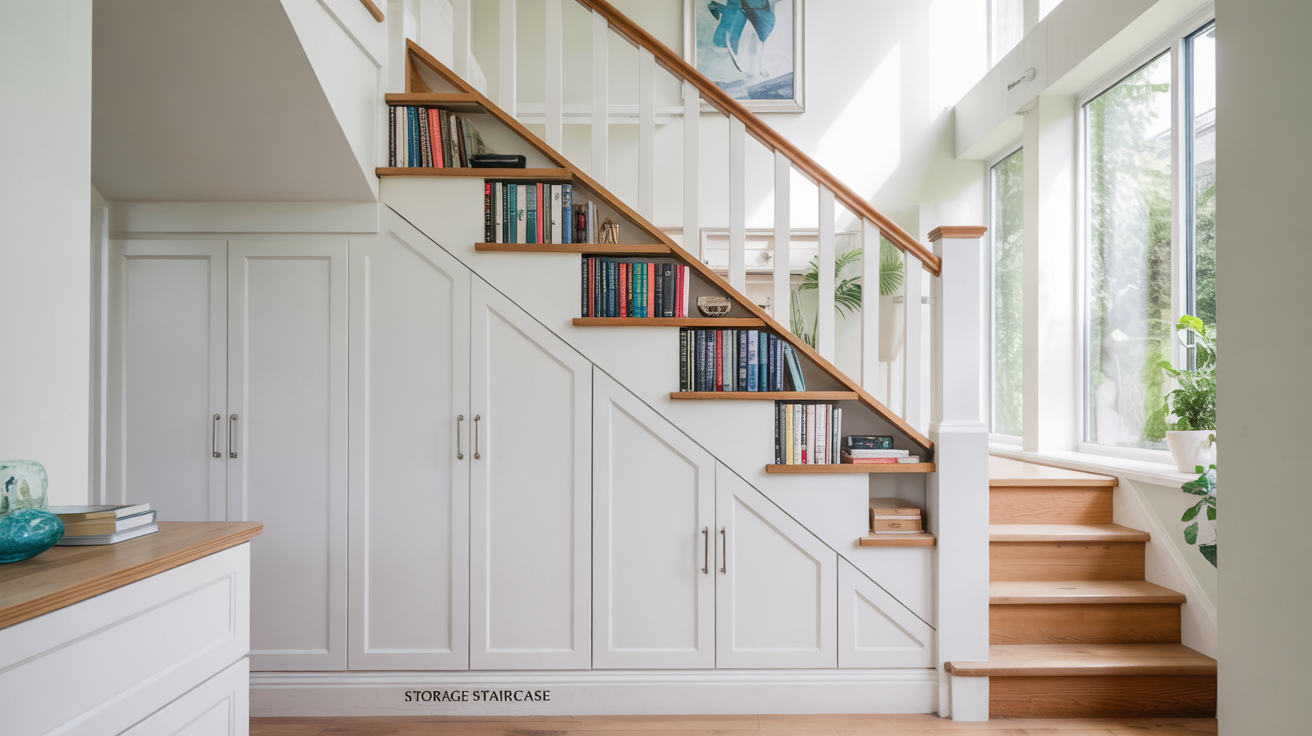
A storage staircase incorporates cabinets, drawers, or shelving within or beneath the stair structure, combining function with form.
Best suited for: Small homes, tiny houses, lofts, and spaces where maximizing storage is essential.
Pros: Provides valuable storage space in otherwise unused areas; makes efficient use of limited square footage; combines two home functions.
Cons: May require custom construction; can be more expensive than standard staircases; might limit design options for the stairs themselves.
What Materials are Popular in Staircase Design?
The materials used in your staircase construction significantly impact both its visual appeal and longevity. Different materials convey distinct styles and complement various interior designs.
| Material | Variants/Examples | Design Appeal | Best For |
|---|---|---|---|
| Wood | Oak, Maple, Walnut | Warm, classic or modern look; can be stained or painted | Traditional, contemporary, and adaptable interiors |
| Metal | Steel, Wrought Iron | Sleek, strong, industrial or decorative elements | Industrial, modern, or eclectic homes |
| Glass | Clear, Frosted Panels, Full Glass Treads | Minimalist, maximizes light, creates openness | Modern, space-enhancing designs |
| Concrete | Polished, Stained, Textured | Industrial, bold, durable with sound dampening | Modern homes, long-lasting use |
Combination Styles
Many of today’s most appealing staircases combine multiple materials:
- Wood treads with metal railings for warmth with clean lines
- Concrete stairs with glass balustrades for an open yet solid feel
- Wood and stone pairings for natural texture variation
Custom combinations allow homeowners to create truly unique staircases that reflect personal style while meeting functional needs.
Choosing the Right Staircase Style for Your Home
Selecting the perfect staircase involves balancing practical considerations with aesthetic preferences. Your choice should complement your home’s architecture while meeting your family’s needs.
Factors to Consider
- Space: Check your area size. Small homes may need spiral or storage staircases, while bigger homes can fit straight or split designs.
- Safety: Think about daily users. Homes with children or older adults need even step depths, strong rails, and clear sightlines.
- Cost: Set a clear budget. Straight staircases usually cost less than curved or open designs that need special construction and materials.
- Look: Choose if you want your staircase to fit in or be noticed. Main entry staircases often serve as key design elements, while back or side staircases might be more basic.
Conclusion
A staircase does more than connect levels; it connects your design vision with everyday living.
From traditional straight runs to bold zig-zag or cantilevered styles, there’s a staircase solution for every space, budget, and aesthetic.
Remember to factor in safety, light flow, layout, and personal style when making your decision.
Feeling inspired?
Find the staircase style that best fits your home and share your favorites or renovation plans in the comments. Let your next step be a stylish one!

